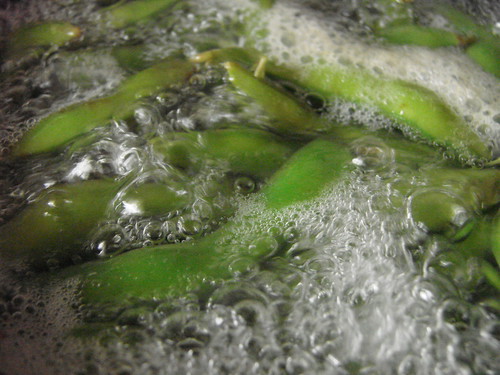We’ve leveraged social to the point where there’s a big melting pot of content out there, but how do you make all that data more useful? The next step of social media is to take a step back towards a more personal information layer.
I’ve been thinking a lot lately about the direction of social media and what it means to me, and I’ve found myself uninterested at best. So we share stuff. Big damn deal. There’s so much content being shared to me that I ignore almost all of it now, at least compared to what I was consuming a year ago. No offense to any of my contacts, but I’ve reached the point where enough is enough, and while all that firehose of content is still in my input stream, I’ve altered my patterns to only consume what’s relevant to my interests at that moment.
For example, tweets are skimmed while walking up the stairs (Confession #1: Or when I’m in the restroom. Hey, just being honest), but hundreds of messages may be ignored if I decide to do something more interesting for a weekend. Neglected RSS feeds pile up to the dreaded 1000+ mark. I used to have a level of background stress because I was “behind,” but after learning that I’m no worse off without this information, I now have no regrets using the “mark all as read” button with reckless abandon.
The content’s there, now make it relevant.
While too much content isn’t a bad thing (until you reach the point where you’re so unable to manage it that it becomes easier to ignore), I didn’t bring up the previous rant and confession to focus on content filtering. I think that’s a problem to be solved with some sort of relevancy engine, something that reads in your context, available resources, and attention profile, and feeds you the data that’s most useful to you at that moment. But even that intelligently consumed content can be made much more useful if I have a highly customized layer to help me organize my own meaning for that data.
But there’s bookmarking tools, you might say. And tags. With these tools, you can organize content however you want. To be honest, I could never get started using bookmarking services until just a few months ago when I started using Mento.info, because it has a nice balance between the metadata robustness of a bookmarking service and the relevant content highlighting of a tumblelog. (Confession #2: the first service was actually ma.gnolia, but only for a few heavily-frequented topics. And all those links are gone now, bless ma.gnolia’s heart.)
Bookmarking services are flexible, but that also means they’re very generic. Their biggest flaw is that even when given the option of clipping content, you’re recording a copy of what someone else said or likes or thinks is useful. What if I like the author’s advice, but find that it doesn’t work for me 100%? Feedback can be shared publicly in comments, but they’re merely a footnote to the original content.
The first step of social media was to make everything public; the next step is to make it more applicable to your individual situation.
I’ve come up with an idea I call a personal information layer. This data layer is a different concept than annotation as found in services like Diigo, where users’ adjustments float like post it notes. The personal information layer should look and interact just like the original content, but customized to the preferences for an individual user. Recipes are a good example. I may like much more sage than the original author called for, or perhaps my oven requires an additional 10 minutes cooking time. The content is way more valuable to me when I can alter it according to my taste and needs.
Remixing is hard enough now. What happens to copyright in an Internet like this?
This question felt a lot easier to deal with when I was trying to keep the data in the personal information layer truly personal (read: private), but it just won’t work that way (Confession #3: also, I loathe the idea of building another social graph). Even individual adjustments to public content is useful data, so there’s value in sharing it. But this will be harder to defend than deep linking and reblogging…this is making potentially minor changes to someone else’s otherwise verbatim content and collecting it all under your own name. Simultaneously collecting and customizing data is another step towards the ideal Internet, but at what point does Emeril’s pie recipe become Brittany’s pie recipe? What’s the significance if it was Kathy’s version before Brittany saw it?
I can’t predict how the Internet community will respond to any of these challenges; I don’t think anyone can until a demo is released in the wild to see how people react. And of course, I wouldn’t go through the trouble of documenting all these questions and ideas if I didn’t have a hell of a use case I hope Dave and I have time to experiment with over the summer.



